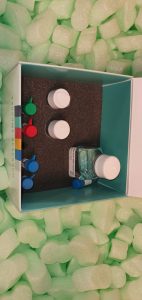Entomopathogenic fungi are ubiquitous in tropical rainforests and function a excessive stage of range. This group of fungi not solely has necessary ecological worth but in addition medicinal worth. Nevertheless, they’re typically ignored, and many unknown species have but to be found and described. The current examine goals to contribute to the taxonomical and phylogenetic understanding of the genus Paraisaria by describing three new species collected from Guizhou and Yunnan Provinces in China and Krabi Province in Thailand.
The three novel species named Paraisaria alba, P. arcta, and P. rosea share comparable morphologies as these within the genus Paraisaria, containing solitary, easy, fleshy stroma, fully immersed perithecia and cylindrical asci with thickened caps and filiform ascospores that usually disarticulate at maturity. Phylogenetic analyses of mixed LSU, SSU, TEF1-α, RPB1, RPB2, and ITS sequence knowledge verify their placement within the genus Paraisaria. In this examine, the three entomopathogenic taxa are comprehensively described with colour images and phylogenetic analyses. A synopsis desk and a key to all handled species of Paraisaria are additionally included.
First report of alfalfa leaf spot brought on by Leptosphaerulina australis in China
A illness was noticed on alfalfa cultivar WL168 characterised by white to brown leaf spots of normal to spherical shapes, in Aluhorqin County, Inner Mongolia, China (120°13’23″ to 120°29’14″ E, 43°27’52″to 43°35’16″ N, 281.71m to360.13 m Altitude) throughout 2019 to 2020. The illness primarily offered in spring one month after re-greening and the incidence was 78.30% on this discipline.
Twenty alfalfa vegetation with extreme signs had been used for pathogen isolation. The contaminated tissue was reduce into 2 × 2 mm items, surface-sterilized (in 75% ethanol and 5% business bleach (NaClO) for 30 s and 2 min, respectively), rinsed 5 occasions with sterilized distilled water, and dried between sterile filter paper (Wang et al. 2019). The diseased tissue from every plant pattern had been cultured on potato dextrose agar (PDA) and incubated at 25 °C with 12 h mild/day for ten days.
A fungus was remoted from the diseased leaves at a 100% frequency. Fungal development on PDA was spherical with a black floor, radial edge, and a unclean white middle. The ascocarps had been moved to a clear microscope slide to launch asci and ascospores. Ascocarps had been spheroidal, subglobose brown, 120 to 160 µm × 160 to 180 µm, which include a number of ascus. The dimension of ascus had been 31.zero to 41.6 μm × 75.zero to 87.5 μm and every asci having eight ascospores.
Ascospores had been ellipsoid to rectangular with a gelatinous sheath, brown, 8.Eight to 15.zero µm × 29.9 to 43.zero µm with 2 to three horizontal septums, and zero to 2 vertical septums. A phylogenetic tree was constructed after DNA extraction, PCR with primers to amplify the ITS (VG9: 5′- TTACGTCCCTGCCCTTTGTA-3′ and ITS4: 5′-TCCTCCGCTTATTGATATGC-3′) and LSU (LR7: 5′-TACTACCACCAAGATCT-3′ and LROR: 5′- GTACCCGCTGA ACTTAAGC -3′) areas. The LSU (SUB8273071) and ITS (SUB8218291) amplicons confirmed 99% similarity with L. australis (EU754166.1) within the GenBank.
To confirm the pathogenicity, fungs plugs had been inverted on three compound leaves of 20 alfalfa WL168 for 2 days. Agar plugs (PDA) had been inverted on one other 20 alfalfa WL168 three compound leaves which had been management. All vegetation had been maintained at 22 °C and 44% relative humidity in a development chamber. Similar illness signs had been noticed on contaminated leaves ten days after inoculation, whereas management vegetation confirmed no signs.
The similar fungus was re-isolated from the lesions, and additional morphological characterization and molecular assays, as described above. L. australis has been reported on numerous vegetation, together with Prunusarmeniaca, Dolichos, Poa, Lolium, and Vitis in Australia (Graham and Luttrell., 1961), and additionally from Korean soil in 2018 (Weilan et al., 2018). Additionally, L. briosiana, which is frequent within the USA, China, and different nations, causes Leptosphaerulina leaf spot (Samacet al., 2015). L. trifolii is newly reported to happen in China (Liu et al., 2019). To one of the best of our information, that is the primary report of L. australis infecting alfalfa in China. Considering the big planting space in Inner Mongolia, this pathogen might losses to alfalfa cultivation. Hence, future research ought to discover points of efficient administration of this illness.
Four new species of Talaromyces part Talaromyces found in China
Four new Talaromyces species with none shut kinfolk are reported right here, specifically, T. aureolinus (ex-type AS3.15865 T), T. bannicus (ex-type AS3.15862 T), T. penicillioides (ex-type AS3.15822 T), and T. sparsus (ex-type AS3.16003 T). Morphologically, T. aureolinus is exclusive in producing orange-yellow mycelium and gymnothecia, singly borne asci, and ellipsoidal, spiny ascospores.
Talaromyces bannicus is characterised by the sluggish development price, polymorphic conidiophores, inconsistent stipe lengths, and pyriform to ellipsoidal, echinulate conidia. Talaromyces penicillioides is distinguished by good development and sporulation on malt extract agar (MEA) and yeast extract sucrose agar (YES) media, resembling the colony appearances of sure Penicillium species, and appressed biverticillate and sometimes monoverticillate penicilli bearing globose to ellipsoidal, echinulate conidia.
[Linking template=”default” type=”products” search=”Fscn1 antibody” header=”3″ limit=”116″ start=”4″ showCatalogNumber=”true” showSize=”true” showSupplier=”true” showPrice=”true” showDescription=”true” showAdditionalInformation=”true” showImage=”true” showSchemaMarkup=”true” imageWidth=”” imageHeight=””]
Talaromyces sparsus has extensive, submerged colony margins with sparse aerial mycelium, and conidial areas overlaid with yellow-green, sterile hyphae on MEA medium. These 4 new species are effectively supported by particular person phylogenetic timber based mostly on β-tubulin (BENA), calmodulin (CALM), DNA-dependent RNA polymerase II second largest subunit (RPB2), and inside transcribed spacer area (ITS) gene sequences and the tree of the concatenated BENA-CALM-RPB2 sequence.




